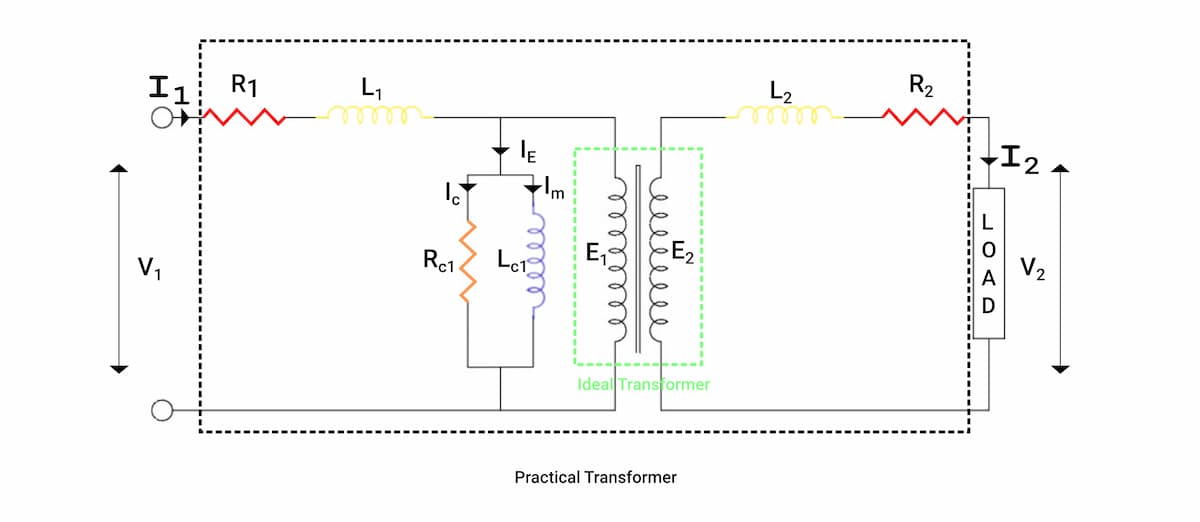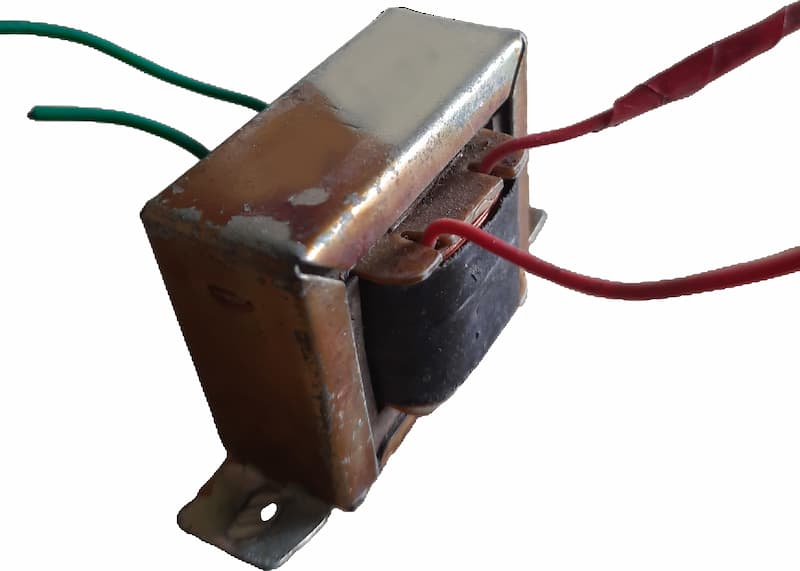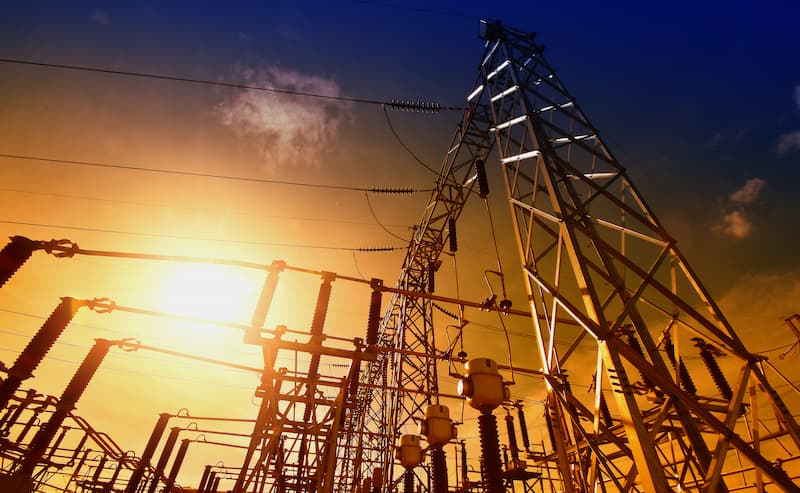
An ideal transformer is regarded as a conceptual model which possesses all the fundamental features of a practical transformer excluding the energy losses. Ideal transformer cannot be achieved in practical world.
The following considerations are taken for an ideal transformer, that are actually not the case for real/practical transformers:
| Ideal Transformer | Practical/Real Transformer |
|---|---|
| The primary and secondary winding resistance and the power/energy lost in them are considered to be zero. | The primary and secondary windings offer some resistance and there is power lost in them. |
| Same amount of flux links both primary and secondary side of the transformer (as in, there is no leakage flux) | There is a definite leakage flux inside the transformer and the flux connecting the secondary side and the primary side is not the same. |
| Efficiency is 100% | Efficiency is lower than 100% |
| Permeability of core is considered infinite. | Permeability of core is finite. |
| There are no power losses (for example, eddy current losses or hysteresis losses). | There are power losses. |
Real/practical suffer from power losses such as copper losses, eddy current losses, stray losses, dielectric losses, mechanical losses, ohmic losses and hysteresis losses while all of these are considered as not existent in case of ideal transformers. Due to the existence of these losses, the real/practical transformer is never at 100% efficiency. Losses are present in all kinds of practical transformers, such as instrument transformers, high voltage transformers, etc.

The above circuit diagram shows the equivalent circuit of a real/practical transformer in terms of an ideal transformer .

